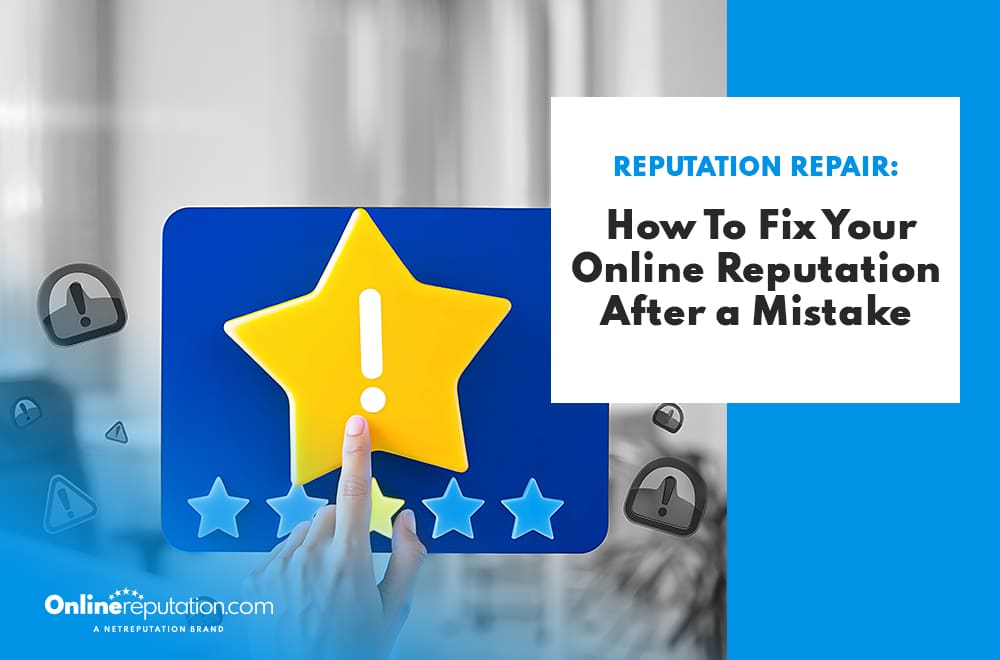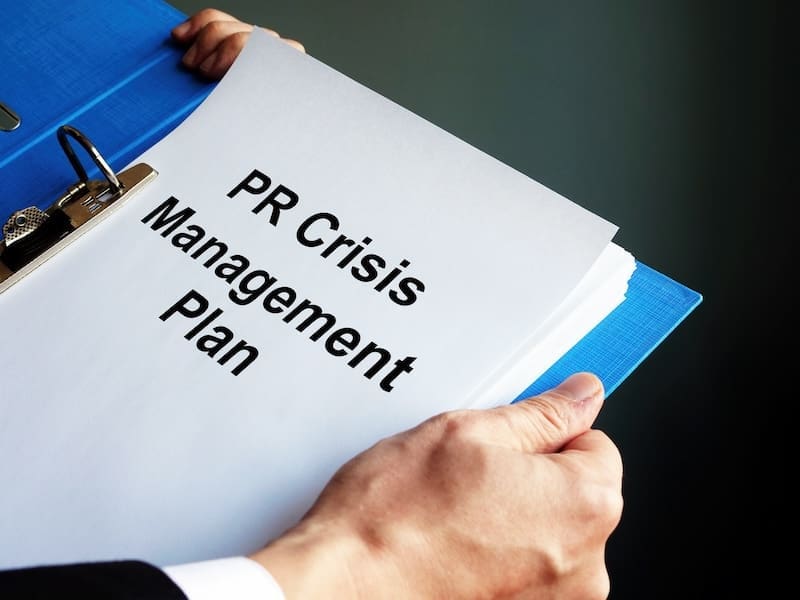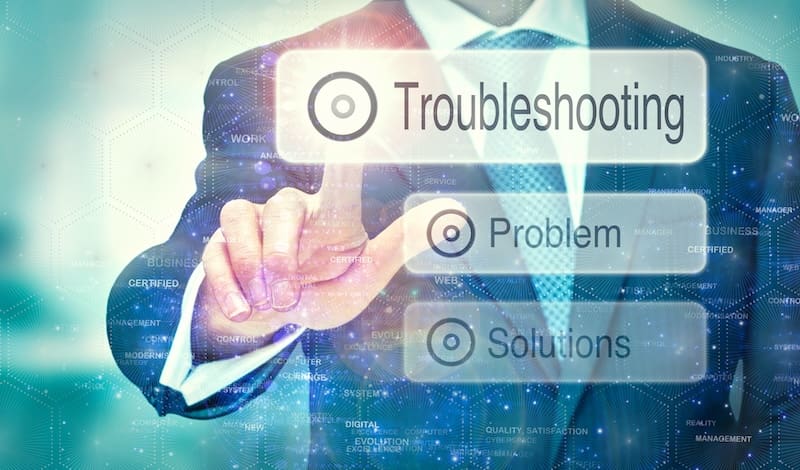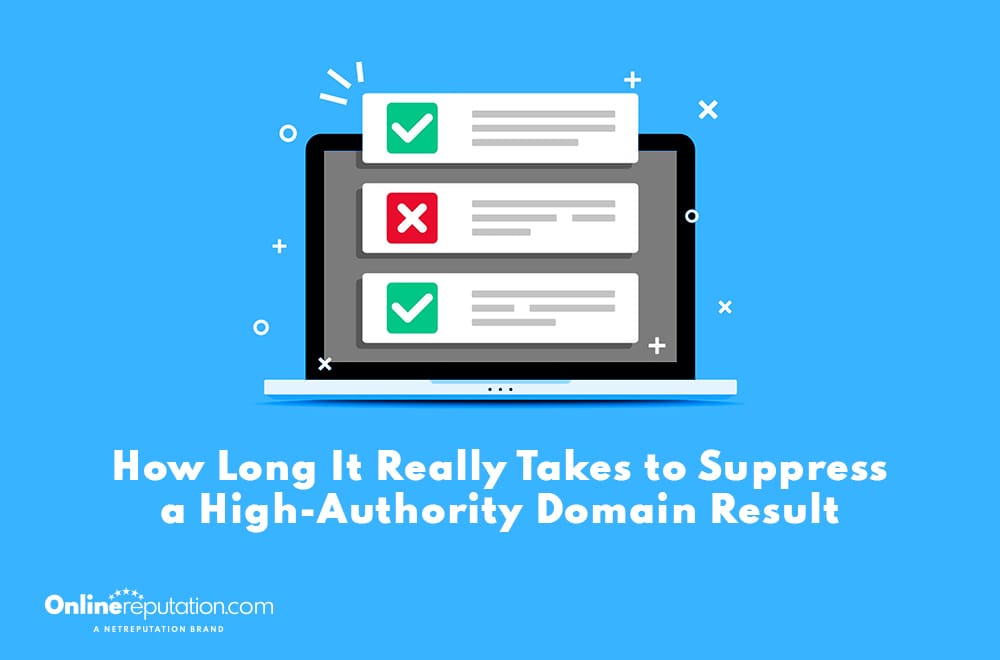
Learn the basics of online reputation repair so you can bounce back from a mistake before it snowballs out of control.
It happens in life even to the best of us: We make mistakes.
Online, mistakes are amplified. News about a rogue social media comment or a blog post with a typo can travel faster than you can hit the delete button. And the more popular your brand, the more people will have screenshots of the incriminating incident, so removing the content won’t even matter much.
Yet, there’s a silver lining. The internet’s attention span is fleeting, with the focus shifting rapidly to the next scandal. While not everything is forgiven, most mishaps are eventually relegated to background noise, fading from the collective memory of the general public. However, this transient nature comes with a caveat.
People tend to form instant judgments, and a single misstep can result in substantial revenue loss as disgruntled customers swiftly express their displeasure. What’s more, a grievous error can have lasting repercussions. Customers who leave may never return, leading to a significant impact on potential recurring revenue streams.
Every post and update carries weight, and it’s delicate to balance maintaining a positive image with inadvertently causing a public relations crisis. Brands must navigate these waters carefully, understanding that the internet, while forgiving, never truly forgets.
In this article, we’ll go over how to handle past online mistakes that could damage your online reputation.
It’s possible to create a positive online reputation even if you’re starting from scratch or rebounding from a PR crisis. Call us at 844-230-3803 to hear about our online reputation management services.
Step 1: Have a Reputation Management Plan

As we mentioned, you’re going to make mistakes online. When you do, have an online reputation management plan in place for how to handle these mistakes.
The online reputation repair plan should include a variety of scenarios and the steps to take for each one.
This is especially important as your team grows since you might not be reachable when a problem occurs. Make sure every employee knows how to handle tough situations moving forward.
Step 2: Identify the Severity of the Problem

Some problems are funny or annoying, but they won’t do much online reputation damage. For example, if you make a typo in one of your social media posts, it’s not the end of the world (unless you run an editing business, maybe). However, if an angry employee posts a racist message on your Facebook page, this is a huge deal.
The severity of the problem will help you determine how drastic your response should be.
Step 3: Fix the Problem to Improve Your Online Image

Nothing is ever truly deleted from the internet, but that doesn’t mean you should let an offensive social update stay live, keep a factually incorrect post on your blog, or allow hackers to control whatever they’ve hacked.
After identifying the problem, your next online reputation repair step has to be to stop the bleeding.
Step 4: Apologize and Explain

After there’s been an online reputation management crisis, the first thing to do is take ownership and apologize — no matter what the situation is.
Do you have to admit fault if you or your company wasn’t actually at fault? Not necessarily. But it’s important to take accountability for whatever your role in the problem was.
Our basic human instinct is to defend ourselves, especially when our professional or personal online reputation is at stake. However, any defense can be seen as an unwillingness to admit to your part of the problem.
After sincerely apologizing, offer an explanation (not an excuse) for what happened. Being transparent will make it easier for your brand to bounce back from an online reputation management crisis.
We work with clients to help them build their online reputation, respond to negative reviews and take control of their digital presence. Give us a call at
844-230-3803
to learn more about our reputation management offerings.
Step 5: Connect With the Biggest Players

Is there a single person who’s been the most impacted, and they’re quickly spreading the word online? Are you up against an onslaught of negative reviews or negative search results for your name or company name? Have you upset a large portion of your most valued customers, and you’ve noticed you’re no longer generating positive reviews?
Whatever the situation, your next online reputation management step should be to directly communicate with the people who have been harmed the most — and those who are the cause of your negative search results.
Reach out to those people to hear them out, apologize and offer something that could lead to online reputation repair, like a refund, free product or discount.
Step 6: Move On To Focus on Creating a Positive Online Presence

The unfortunate truth of online reputation repair is that some people won’t accept your apology no matter what. Unfortunately, certain people may want to evoke a response from you, but they don’t care much about actually finding a solution.
In this case, don’t feed the trolls. Debating will only continue to push the issue into the spotlight and make those poor search results stay at the top for longer.
Remember, most people will forget you made a mistake pretty quickly. You can move forward if you stop engaging with people who are bringing it up.
Along with our parent company NetReputation, OnlineReputation.com provides information and services to help you protect your digital presence and bury bad search results. Get started with a free online reputation analysis here.
Step 7: Examine Your Policies and Make Changes

Once you’re on your way to repairing a damaged online reputation, it’s time to figure out exactly what went wrong and how to prevent it in the future.
Ask yourself and your team questions like, “What caused this problem in the first place? What can we do differently so it doesn’t happen again?”
For example, was it an overly opinionated blog post that made people mad? Maybe your new policy is to have at least three people look at each post before it’s published to ensure it enhances your brand messages.
Was an employee posting to social media from your brand account when they meant to be posting from their account? Maybe your new policy is to get everyone on the social team a dedicated phone for social updates from brand accounts.
Do what you can to show responsibility and avoid repeat problems. People will forgive you once, but they may not be able to look the other way if mistakes happen repeatedly.
Reputation Management Services Can Help

Successfully managing your online reputation after a mistake requires a thoughtful, strategic, and adaptable approach. Mistakes in the digital realm, whether minor or significant, are inevitable. However, the actual test of a brand’s strength and character is not in the error itself but in how it is handled.
Effective online reputation management emphasizes prompt action, sincere apologies, and transparent, clear communication. It’s about demonstrating a genuine commitment to rectifying the present situation and preventing future occurrences. Crucially, it involves understanding when to engage and when to step back, recognizing that not every critique requires a response.
Above all, online reputation management is a continuous process of learning, adapting, and improving, ensuring that each misstep becomes an opportunity for growth and a chance to deepen the trust and loyalty of your audience.
Remember, authenticity, integrity, and accountability are highly valued in the ever-evolving digital landscape. A well-managed response can transform a potential crisis into a pivotal moment for positive change.
Get started with a free analysis here or explore our services offered through our parent company, NetReputation.
You might also like
How Long It Really Takes to Suppress a High-Authority Domain Result
Learn the basics of online reputation repair so you can bounce back from a mistake before it snowballs out of …

